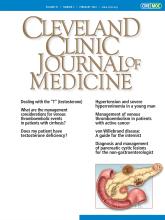We appreciate the timely and helpful commentary by Dr. Gadani and colleagues highlighting the recent inclusion of PAE in the American Urological Association (AUA) guidelines for the management of lower urinary tract symptoms secondary to BPH.1 As noted, PAE is a welcome addition to the urological armamentarium available for BPH treatment. We agree with their evidence-based perspectives and their assertion that PAE is a useful approach for certain patients with BPH. PAE also serves as a helpful approach to refractory hematuria of prostatic origin. Anecdotally, some have utilized PAE prior to robotic simple prostatectomy to reduce bleeding risk in patients who do not accept blood products, but outcomes and data to support this practice are lacking.
While PAE may serve as an option for BPH treatment in patients who are not surgical candidates, are at a high risk of bleeding, or who wish to preserve sexual function or minimize incontinence risk, similar to water vapor ablation, PAE is a treatment that relies upon tissue necrosis (instead by ischemia) and thus provides a delayed benefit for patients. The exact delay between treatment and improvement of lower urinary tract symptoms is incompletely understood, but likely relates to prostate size. Additionally, as with other newer BPH treatments, PAE lacks long-term follow-up data to elucidate its durability and subsequent BPH retreatment rates. This may stem from patients following up with urologists after PAE and not necessarily returning to the interventional radiology teams who completed the procedure.2,3
As the aim of our article was to provide a balanced overview of the risks and benefits of BPH procedures, it is worth highlighting some of the risks of PAE to complement the strengths and benefits of the procedures noted by Dr. Gadani and colleagues. A study comparing PAE to TURP found that PAE had a higher retreatment rate and greater risk of postprocedural urinary retention, and was less effective at alleviating bladder outlet obstruction, as evidenced by urodynamic (bladder pressure at maximum flow) measurments.2–4 Radiation exposure must also be acknowledged, as this is exclusive to PAE relative to other BPH therapies. Additionally, there are unique risks of PAE that relate to its vascular basis, which include post-PAE (post-embolization) syndrome. This consists of nausea, vomiting, fever, pelvic pain, dysuria, and urinary frequency for several days after the procedure and occurs due to the presence of an infarcted tissue mass. Lastly, the risks of inadvertent embolization of vessels perfusing the bladder, rectum, and other neighboring structures must also be recognized.
As with BPH surgery, greater procedural experience likely drives a lower risk of PAE complications. As Dr. Gadani and colleagues note, PAE should be performed in centers with highly trained and highly experienced interventional radiologists. It has a particularly challenging learning curve and is technically demanding, with potentially lengthy procedures having an average fluoroscopy time of up to 50 minutes and procedure duration of up to 2 hours.5 Taking all into account, the addition of PAE to the AUA guidelines is warranted, as it fills a necessary niche in the spectrum of BPH treatments. It is also evidence of the increasingly interdisciplinary approach to patient care that is occurring throughout healthcare. For the right patient, in the right scenario, and where there is necessary expertise, PAE can be facilitated optimally when interventional radiologists and urologists collaboratively manage patient care.1
- Copyright © 2024 The Cleveland Clinic Foundation. All Rights Reserved.






